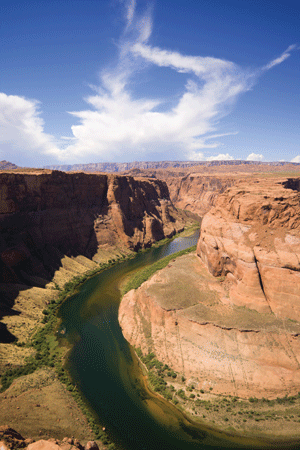Scarce water resources in the arid West drive the search for technological solutions
 The Colorado River has long been the lifeblood of the American Southwest. Its power is most evident at the Arizona-Nevada border where, impounded by the Hoover Dam, its waters gather to create the majestic Lake Mead. The reservoir is one of the largest in the world; when full, it holds nearly 10 trillion gallons of water. Through basins like these, the river and its tributaries provide water for more than 30 million people and irrigate two million acres of farmland across Arizona, California, Colorado, Nevada, Utah, New Mexico and Wyoming.
The Colorado River has long been the lifeblood of the American Southwest. Its power is most evident at the Arizona-Nevada border where, impounded by the Hoover Dam, its waters gather to create the majestic Lake Mead. The reservoir is one of the largest in the world; when full, it holds nearly 10 trillion gallons of water. Through basins like these, the river and its tributaries provide water for more than 30 million people and irrigate two million acres of farmland across Arizona, California, Colorado, Nevada, Utah, New Mexico and Wyoming.
But the Colorado and other water resources in the West are becoming overtasked. In the future, a warming climate will likely shorten snow seasons, cause runoff to start earlier and send more moisture skyward through evaporation, rather than downstream as melt. Climate models predict a reduction of Colorado River flows ranging from 5 to 50 percent by mid-century, says Brad Udall, director of the Western Water Assessment Program at NOAA



I want to explore the commercial applications of this for wastewater in Texas. Who do I contact?